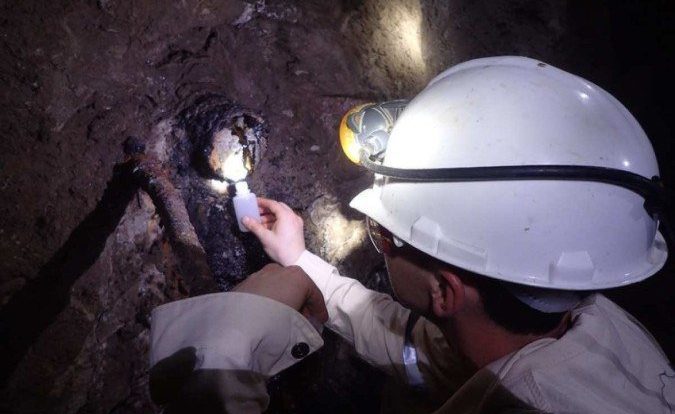
Posted on 07/06/2022 20:22 / Updated 06/07/2022 20:42
(Credit: Oliver Warr/Reproduction)
A group of researchers at the University of Toronto discovered 1.2 billion years of deep groundwater inside a mine Production of gold and uranium in Moab Khotsong, South Africa. Radioactive elements and large amounts of helium and hydrogen were found in the water and rocks at the site, which are essential to the formation and preservation of living organisms.
In the assessment of scientists, the discovery contributes to understanding how life forms survive without access to them solar energy – Just as it has been recorded deep in the earth, the chemical reactions that have been found may indicate that the process of creating these life generators can also be carried out on other planets that do not have ideal conditions of sunlight to sustain living organisms.
Moreover, finding high levels of helium scattered “deep in the Earth” is an important step, “as global reserves of the element are depleted and the transition to more sustainable resources is gaining momentum.”
“Think of it as Pandora’s box of the power of helium and hydrogen production, which we can learn to harness for the benefit of the deep biosphere on a global scale,” explains Oliver Warr, a research associate in the Department of Earth Sciences at the University of Toronto and lead author of the study, which was published July 4 in the magazine Nature Communications.
presence of uranium
The material analyzed showed the presence of uranium and other radioactive elements in the rocks of the mine, substances that, in this environment, a type of “phosphorous” that ignites a process called radioactive reactions in the rocks and fluids that surround these rocks deep in the earth.
When uranium, thorium, and potassium decay on the surface of the rocks, alpha, beta and gamma radiation are generated which have ripple effects that lead to radioactive interactions. According to the researchers, in the mines in South Africa, these reactions are responsible for the appearance of radioactive helium, neon, argon and xenon. In addition to the unprecedented presence of a krypton isotope, it has never been seen under these conditions.
In addition, the study revealed that radiation also “breaks down water molecules in a process called radiolysis, resulting in large concentrations of hydrogen, an essential energy source for microbial communities deep in the earth that do not have access to energy from the environment.” for photosynthesis.” Hydrogen is one of the four essential elements, according to experts, for the formation and maintenance of an organism.
“Because radioactive reactions produce helium and hydrogen, we can not only learn about helium reservoirs and transport, but also calculate the flow of hydrogen energy from deep within the Earth that could sustain subterranean microbes on a global scale,” Warr says.

“Web geek. Wannabe thinker. Reader. Freelance travel evangelist. Pop culture aficionado. Certified music scholar.”





